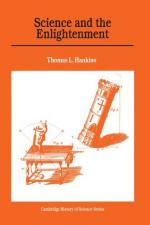
|
| Name: _________________________ | Period: ___________________ |
This quiz consists of 5 multiple choice and 5 short answer questions through Chapter 5, Natural History and Physiology.
Multiple Choice Questions
1. In 1688, Fontenelle wrote a treatise on the nature of the eclogue or ________.
(a) Pastoral poem.
(b) Sonnet.
(c) Haiku.
(d) Limerick.
2. Who coined the expression "Scientific Revolution," according to the narrator in Chapter 1?
(a) Jean Lerond d'Alembert.
(b) Newton.
(c) Descartes.
(d) Malebranche.
3. In Chapter 5, who analyzed the mechanics of the muscles and skeleton of the human body and tried to explain muscular contraction as a hydraulic or mechanical inflation of the tissue?
(a) Boyle.
(b) Borelli.
(c) Grew.
(d) Descartes.
4. In a letter of September 21, 1781, who wrote to his mentor Jean d'Alembert that he feared mathematics had reached its limit?
(a) Joseph-Louis Lagrange.
(b) Sylvestre-Francois Lacroix.
(c) Bernard Fontenelle.
(d) Diderot.
5. Who claimed a community of atheists could live a completely moral existence, according to Chapter 1 of the book "Science and the Enlightenment"?
(a) Pierre Bayle.
(b) Varignon.
(c) Kant.
(d) L'Hopital.
Short Answer Questions
1. The narrator explained in Chapter 4 that there was very little in Lavoisier's activities prior to 1772 that revealed any interest in ________.
2. In Chapter 3, who noticed that when he pulled off his silk socks in the evening, "they frequently made a crackling or snapping noise" and emitted "sparks of fire"?
3. Some of the "cabinet de physique" became very large, the most famous being the collection of the ________ in Haarlem.
4. What was the name of the revolution that was a cultural event associated with Galileo Galilei, Johannes Kepler, Rene Descartes, and Isaac Newton?
5. In Chapter 3, ________ and ________ were both led to the problem of specific heat by the discovery that a great deal of heat was required to melt ice, even though its temperature remained at the melting point.
|
This section contains 287 words (approx. 1 page at 300 words per page) |

|




